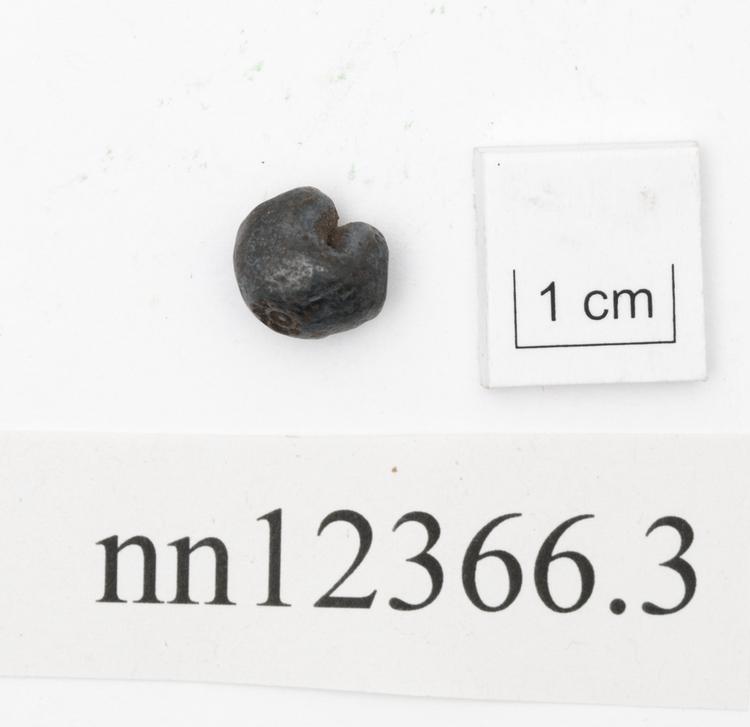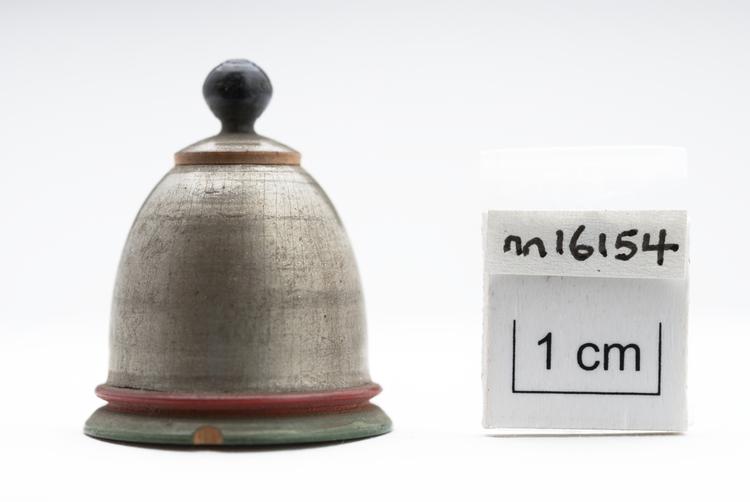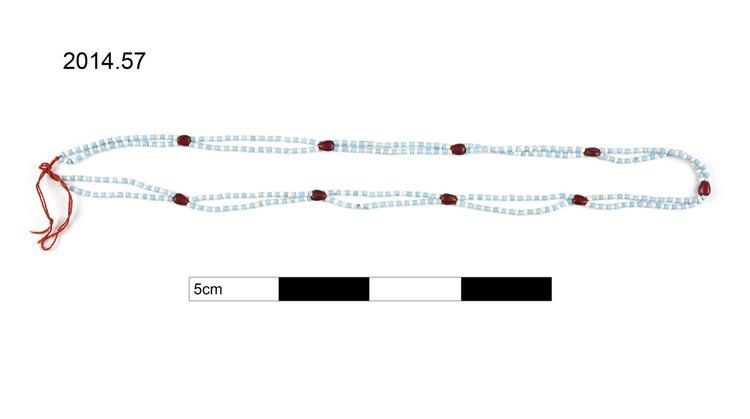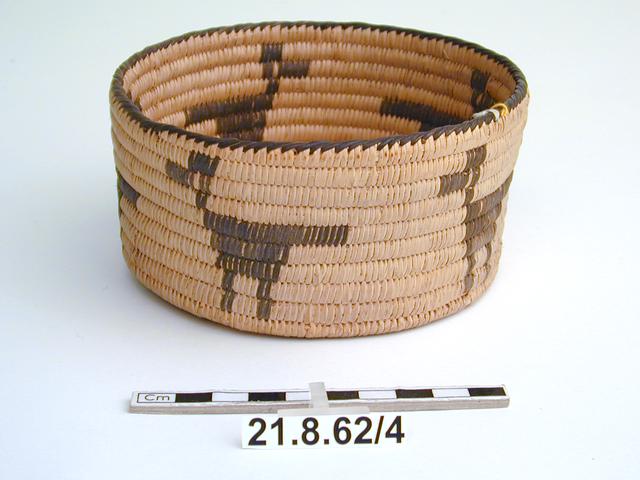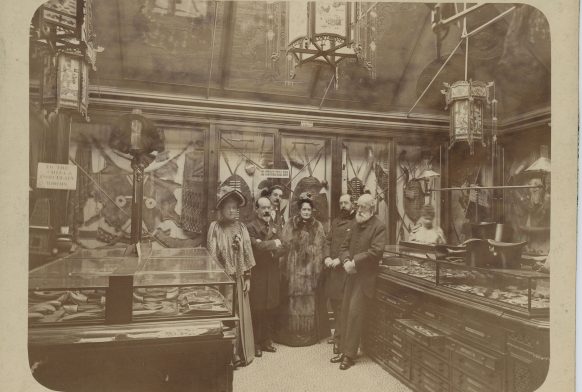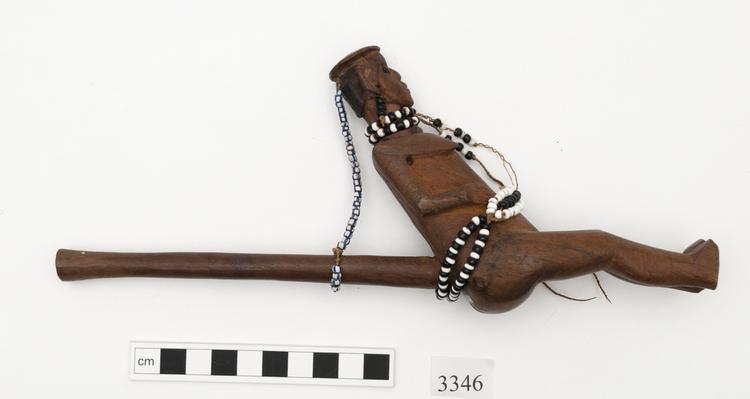
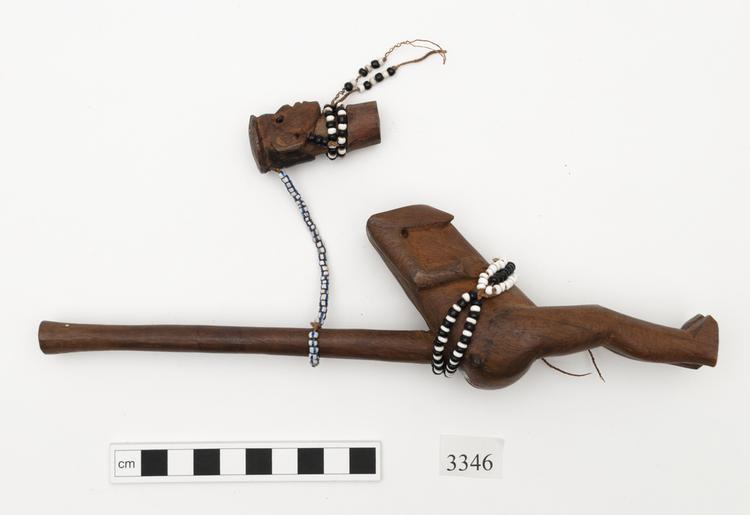
Wooden pipe with iron lining, in the shape of a female figure with black, white and blue beads decorating the eyes, ears, and around the waist and neck. There is also a strand of blue and white beads attaching the removable head to the stem of the pipe.
The present piece relates to a small corpus of similar, known Southern African tobacco smoking-pipes carved to represent a seated female figure. The detachable head, sometimes connected to the pipe-stem by a string of beadwork, serves as a stopper for the pipe-bowl, which is formed out of the figure’s body. With inset bead eyes and adorned with beadwork (usually including an apron and a neck-ornament), these figurative smoking-pipes are, in the absence of firm provenance, thought to originate either among the South Sotho peoples (the Basotho) of Lesotho or the Xhosa-speakers of the Eastern Cape region. Not indigenous to Africa, tobacco was introduced to Southern Africa perhaps as early as the fifteenth century by either the Portuguese or by Arab traders. Among Bantu-speakers throughout Southern Africa, tobacco could be linked to the ancestors and played an important role in maintaining the wellbeing of the community, of which the ancestors formed a part. E. Margaret Shaw of the South African Museum argued that formally, carved tobacco pipes were initially influenced by European examples, see Shaw, 1938. However, over time a great variety of carved pipes developed especially among Xhosa-speakers, many having distinctive and innovative features such as metal inlays, the flanged mouthpiece and beadwork. Unlike other regions, in the Eastern Cape both men and women have traditionally smoked tobacco and many, often elaborately, carved wooden pipes in museum and private collections can be traced to this region. Women generally smoked pipes with longer, narrower bowls, whereas very long-stemmed examples were reserved for elders. There is some uncertainty as to whether or not the figurative pipes in question were intended for indigenous use or if they were carved for sale to outsiders. E. M. Shaw assessed one such pipe in the (now dispersed) collection of Mr R. C. Camp of Cape Town (illustrated in Shaw, 1938, Figure 1 plate XCV. Shaw observed that the Camp piece did not appear to have been used. However, the three Brenthurst Collection (Johannesburg Art Gallery) examples reportedly seem to show signs of use, see Wanless (1991). For the three similar figurative smoking-pipes in the Brenthurst Collection see Johannesburg Art Gallery (accession numbers JL-F-50 (cat no. 362); JL-F-51, JL-F-52) illustrated in Shaw, 1938 Plate 46 p 125; p 168. See also British Museum Af1905,-.63.a-b. References: Shaw, E.M, 1938 Wanless, 1991 Havran, 1991



